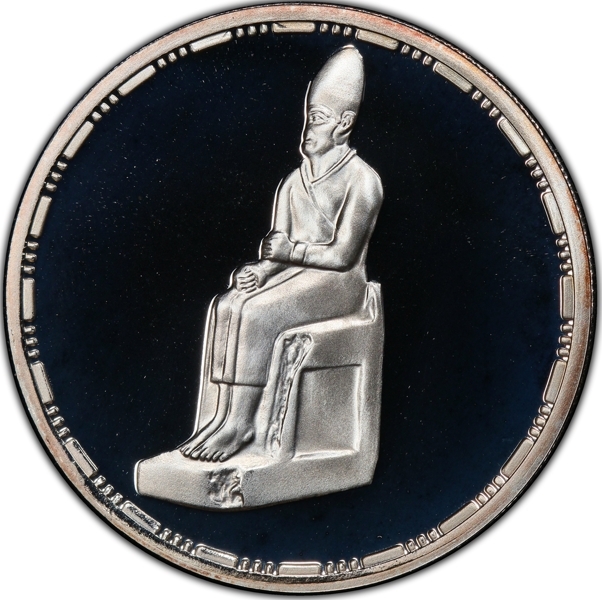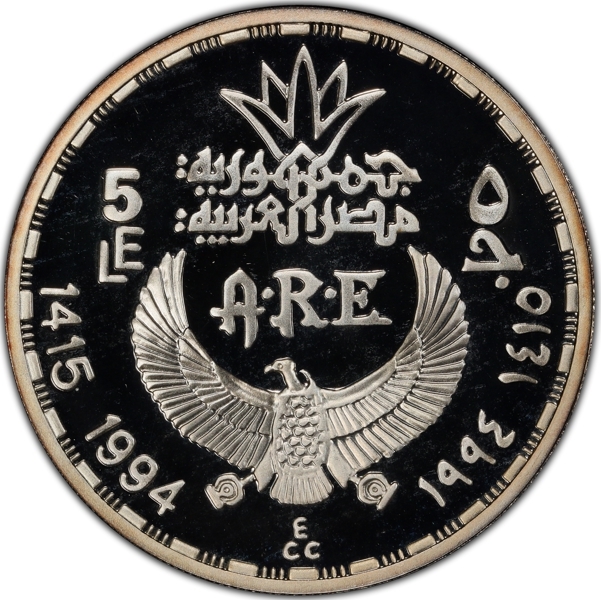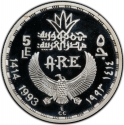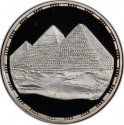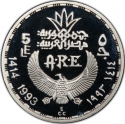You are about to finish your registration. Please check your mailbox (including spam folder). There should be a letter with a confirmation link. Check setting to make sure that your e-mail address is correct.
Send letter againDescription
Khasekhemwy (ca. 2690 BC; also rendered Kha-sekhemui) was the last Pharaoh of the Second Dynasty of Egypt. Little is known about him, other than that he led several significant military campaigns and built the mudbrick fort known as Shunet El Zebib.
His Horus name can be interpreted as "The Two Powerful Ones Appear", but the name is recorded in many variants, such as (Horus, he whose power appears)", (the two powers appear in that the ancestors rest within him)"
Khasekhemwy ruled for close to 18 years, with a floruit in the early 27th century BC. The exact date of his reign in Egyptian chronology is unclear but would fall roughly in between 2690–2670 BC.
Obverse

|
Depicts the sitting statue of King Khasekhemwy (Early Dynastic Period, 2nd Dynasty, around 2700 BC, limestone, height: 62 cm, from Hierakonpolis, Upper Egypt, now in the Ashmolean Museum, Oxford) with conquered foes incised around the base. It is the oldest surviving stone royal sculpture from ancient Egypt. Khasekhemwy is wearing the white Hedjet crown of Upper Egypt and is wrapped in a long robe. His right fist is drilled to attach a separate object, perhaps a mace handle or sceptre. |
|---|---|
Reverse

|
Stylized state name (Arab Republic of Egypt) divides denomination in Arabic and English and abbreviation of state name (A.R.E.) below, the date in Arabic (Hijri) and Western (Georgian) divides by a vulture with open wings. Engraver's initials (ECC) below. 5 ٥ جمهورية مصر العربية |
| Edge |
5 Pounds
Pharaonic Treasure / Ancient Egyptian Art
Pharaoh Khasekhemwy
Subscribe series
KM#
Pharaonic Treasure / Ancient Egyptian Art
Pharaoh Khasekhemwy
